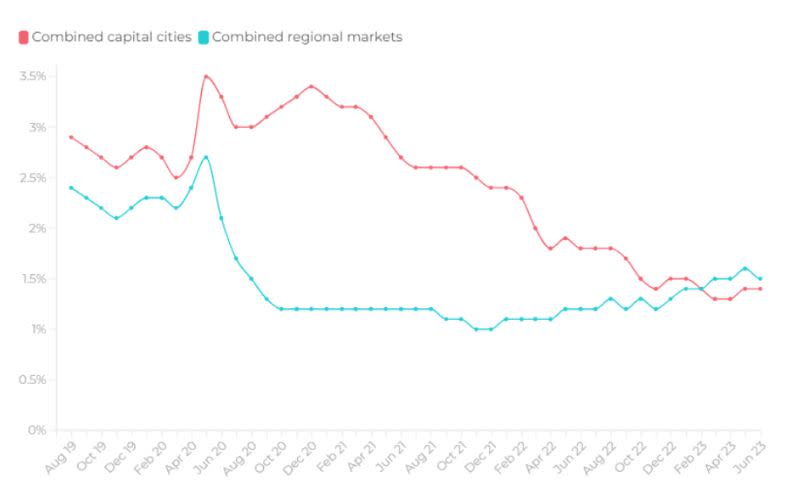Australia’s rental property crisis is showing no real signs of easing, according to global online real estate advertising company REA Group.
Demand holds strong in major capital cities and the number of available rental properties remains limited the group’s PropTrack Rental Report for June found.
The national rental vacancy rate last month was 1.5 per cent, down on the 1.6 per cent of this time last year.
While across the country new rental listings were slightly higher in June than a year ago, they remain historically low, and are 5.7 per cent below the June average for the past five years.
For combined capital cities, the number of rental listings fell 8.8 per cent year-on-year in June—23 per cent lower than the June average for the same five-year period.
That limited supply is allowing landlords freedom to increase rents, with PropTrack’s data showing that across the country rents were up 11.8 per cent year-on-year to sit at an average of $520 per week.
PropTrack’s director of economic research Cameron Kusher said the national rental market remained extremely tight.
“Rental vacancies and days on site have drifted marginally higher but both remain low on an historic basis,” he said. “At the same time, the volume of stock available for rent remains low and demand for rentals is broadly strong.
“And as a result of these conditions, the cost of renting continues to rise.”
The report found the total number of properties listed for rent on realestate.com.au fell by 2.3 per cent in the past 12 months to be 18.5 per cent lower than the June average for the past five years.
Rental vacancy rates in capital cities vs the regions
Melbourne recorded the biggest fall in total rental listings over the year, down 22.7 per cent. Perth dropped 11.1 per cent and Sydney was down 7.8 per cent.
Hobart and Tasmania fared best. Total rental listings over the year grew 59.6 per cent over the year in capital, while regional Tasmania was up 35.3 per cent.
Generally, the smaller capital cities and regional markets were experiencing reduced rental demand, the report said.
“Fewer people are leaving the capitals, while some returned post-pandemic, and strong net overseas migration sees most migrants settling in our major cities,” Kusher said.
He said there continued to be low levels of new investment in housing, keeping the supply of available rental stock relatively low.
“Higher interest rates have seen borrowing capacities fall, making it more difficult for investors and much harder for would-be first home buyers to purchase their home.
“The lack of new supply remains the biggest strain on the rental market, particularly in the larger capital cities.
“In the immediate term, attracting more investors into the market or utilising empty or short-term rental properties for longer-term rentals is the quickest way to address the rental deficiency.”











